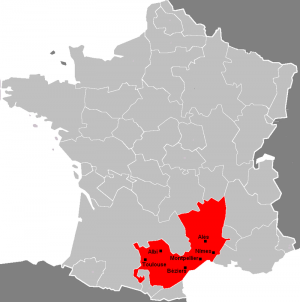Cathars
Cathars were a very successful medieval gnostic Christian sect, or heresy from the Catholic perspective, that flourished mainly, but not exclusively, in the southern region of France known as Languedoc, in the tenth through the twelfth centuries. The popularity of the Cathar religion was so great that it practically became the state religion of the Languedoc region at the time. This widespread popularity proved to be a very clear threat to the Catholic Church. Pope Innocent III instigated a campaign to destroy them; this campaign eventually led to the Inquisition which spread across Europe, and, in reality, still exists today. Historians have recognized this war against the pacifist Cathar heresy as the first genocide of Christians by Christians.
Beliefs and their origins
The word Cathar comes from the Greek word katharoi meaning "pure." The Cathars called themselves simply the Good Men. (Incidentally, the world Catholic is also from a Greek root word, katholikos, meaning "universal" or “in general”.) The Cathars were also known as the Albigensian, named for the town of Albi where there was a large settlement. Their beliefs many historians accept spread westward from Bulgaria, Bosnia and Dalmatia. It is believed to have its roots in Manichaeism, Paulicianism, Bolomilism and/or Zoroastrianism. However, recently some researchers are finding evidence to support the idea that the Cathar faith arose locally and the seeds may have been planted, at least in part, by Pythagoras.
When Pythagoras left Greece he studied in Egypt before founding a school in Croton at the toe of the Italian peninsula boot. There also were known to be other Greek settlements in Languedoc along the shore of what is now Marseilles and further westward. Pythagoras (c. 570 – c. 495 BC) is believed to have founded schools in these Greek settlements.
The parallels between the Pythagorean schools and that of the Cathars is noteworthy. They are as follows:
- Believed in reincarnation
- Believed in two supreme opposing powers or gods, or sets of divine or demonic beings, that created the world. They were dualists.
- Teachings were orally transmitted – it was forbidden to write them down
- Accepted both men and women equally into their ranks - gender was not a barrier to rising in the ranks
- Had an inner and outer circle of believers – the inner circle was held to much stricter standards of behavior than the outer circle of the believers known as croyants (believers). The inner circle was privy to the higher secrets unavailable to the outer circle of followers.
- Personal property of all kinds was relinquished to the church. This was expected of the inner circle but not the outer circle.
